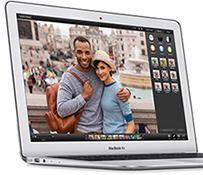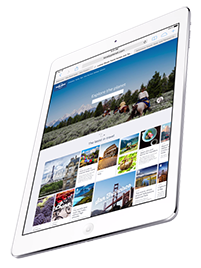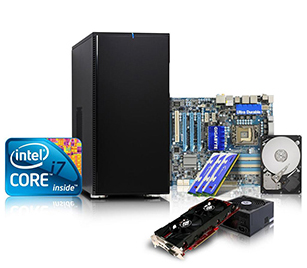PC & LAPTOPS
 Until recently, if you were in the market for a new computer and had to decide between a laptop and a desktop, the choice was simple. The laptop versus desktop dilemma was usually decided by whether mobility or performance was more important to you. Oftentimes, students and remote workers chose laptops, while gamers and designers went for desktops.
Fortunately, computer technology has come a long way since the days of laptops with limited battery life and desktops with cumbersome hard drives and tangles of wires. Nowadays, when you choose a new computer, you really can take your needs into account.
Until recently, if you were in the market for a new computer and had to decide between a laptop and a desktop, the choice was simple. The laptop versus desktop dilemma was usually decided by whether mobility or performance was more important to you. Oftentimes, students and remote workers chose laptops, while gamers and designers went for desktops.
Fortunately, computer technology has come a long way since the days of laptops with limited battery life and desktops with cumbersome hard drives and tangles of wires. Nowadays, when you choose a new computer, you really can take your needs into account.Tablets & Smart Phones
 Tablets are equipped with sensors, including cameras, microphone, accelerometer and touchscreen, with finger or stylus gestures replacing computer mouse and keyboard. Tablets may include physical buttons, e.g., to control basic features such as speaker volume and power and ports for network communications and to charge the battery. An on-screen, pop-up virtual keyboard is usually used for typing. Tablets are typically larger than smart phones or personal digital assistants at 7 inches (18 cm) or larger, measured diagonally.
Tablets are equipped with sensors, including cameras, microphone, accelerometer and touchscreen, with finger or stylus gestures replacing computer mouse and keyboard. Tablets may include physical buttons, e.g., to control basic features such as speaker volume and power and ports for network communications and to charge the battery. An on-screen, pop-up virtual keyboard is usually used for typing. Tablets are typically larger than smart phones or personal digital assistants at 7 inches (18 cm) or larger, measured diagonally.
Computer Parts
Network Devices
 Typically, networking hardware includes gateways, routers, network bridges, switches, hubs, and repeaters. But it also includes hybrid network devices such as multilayer switches, protocol converters, bridge routers, proxy servers, firewalls, network address translators, multiplexers, network interface controllers, wireless network interface controllers, modems, ISDN terminal adapters, line drivers, wireless access points, networking cables and other related hardware.
Typically, networking hardware includes gateways, routers, network bridges, switches, hubs, and repeaters. But it also includes hybrid network devices such as multilayer switches, protocol converters, bridge routers, proxy servers, firewalls, network address translators, multiplexers, network interface controllers, wireless network interface controllers, modems, ISDN terminal adapters, line drivers, wireless access points, networking cables and other related hardware.
 Computer hardware refers to the physical parts or components of a computer such as the monitor, mouse, keyboard, computer data storage, hard drive disk (HDD), system unit (graphic cards, sound cards, memory, motherboard and chips), etc. all of which are physical objects that can be touched.
Computer hardware refers to the physical parts or components of a computer such as the monitor, mouse, keyboard, computer data storage, hard drive disk (HDD), system unit (graphic cards, sound cards, memory, motherboard and chips), etc. all of which are physical objects that can be touched.